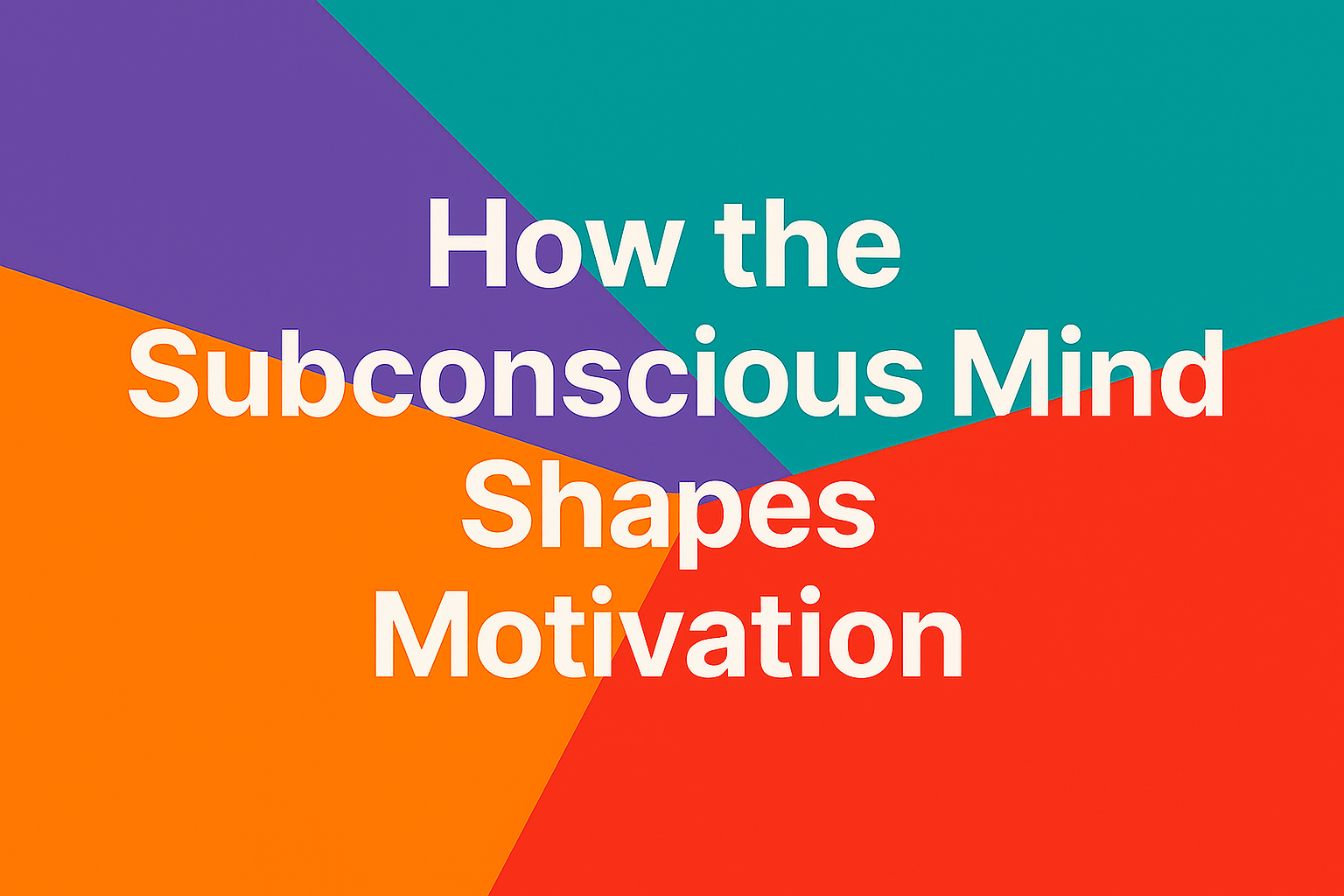Article:
What Is the Subconscious Mind?
The subconscious isn’t mystical; it’s a set of mental processes that run automatically, outside conscious awareness. It includes:
-
Implicit beliefs and biases: Deep-seated assumptions like “I’m not good enough” or “I always fail.”
-
Emotional memory: Past experiences that shape confidence and risk-taking.
-
Habits and routines: Automatic behaviors that free up mental energy for novel tasks.
-
Conditioned responses: Learned associations that trigger reactions without thought.
Think of your subconscious mind as the autopilot of your brain. It’s not inherently good or bad—it simply executes what it has learned. That’s why some call it a “friend” when programmed with empowering beliefs, and a “demon” when filled with fear and self-doubt.
How the Subconscious Shapes Motivation
1. Belief Systems Drive Action
Your subconscious beliefs act like a thermostat for behavior. If you subconsciously believe “I’m not capable,” you’ll unconsciously avoid challenges—even if you consciously want success. Research on implicit goal pursuit shows that goals can be activated and pursued without conscious awareness, influencing persistence and performance.
2. Emotional Triggers Override Logic
Stress, fear, or shame stored in memory can quickly derail motivation, rendering even the most rational plan ineffective. Neuroscience reveals that the brain’s reward and threat systems—particularly the mesolimbic dopamine pathway—label experiences as desirable or dangerous, thereby shaping future behavior.
3. Habits Outweigh Willpower
Motivation fades, but habits persist. Habits form when repeated behaviors in stable contexts create strong neural pathways in the basal ganglia, making actions automatic over time. This is why lasting change depends on rewiring those patterns, not just “trying harder.”
4. Priming and Environmental Cues
Subconscious cues—such as words, images, and environments—can subtly influence behavior without conscious awareness. For example, exposure to achievement-related words can increase persistence on tasks, even when people are unaware of the influence.
The Neuroscience of Motivation and the Subconscious
Motivation is not a single feeling, but a dynamic interplay of brain systems. Two key components are:
- Wanting vs. Liking: Neuroscience distinguishes between the drive to obtain a reward (“wanting”) and the pleasure of consuming it (“liking). Dopamine primarily fuels wanting, which is critical for goal pursuit.
- Neuroplasticity: The brain’s ability to rewire itself means subconscious patterns can change. Visualization and repeated mental rehearsal activate similar neural circuits to authentic experiences, strengthening pathways that support desired behaviors.
How to Reprogram the Subconscious for Motivation
· Awareness First
You can’t change what you can’t see. Journaling recurring thoughts and emotional triggers helps surface hidden beliefs. Mindfulness practices enhance meta-awareness and reduce automatic reactivity by strengthening self-regulation networks in the brain.
· Visualization and Mental Rehearsal
Visualization isn’t just “positive thinking.” Brain imaging shows that vividly imagining success activates the same neural networks as actual performance, reinforcing confidence and reducing anxiety. Athletes, surgeons, and even Law enforcement officers have improved their performance through guided imagery.
Tip: Spend 5 minutes daily visualizing your goal in detail—what you see, hear, and feel when you succeed.
· Affirmations with Evidence
Affirmations are most effective when paired with action. Research on self-affirmation theory suggests that it can reduce stress, improve resilience, and even lower cortisol levels when core values are reinforced and practiced consistently.
Example: Instead of saying “I am successful,” say “I am becoming more skilled every day by practicing X.”
· Habit Stacking
Leverage existing routines to install new behaviors. Neuroscience confirms that habits form through repetition in stable contexts, creating strong cue-response links.
Example: If you want to meditate, attach it to an existing habit: “After I brush my teeth, I will meditate for 2 minutes.”
· Environment Design
Your surroundings constantly prime your subconscious. This realization can make you more mindful of your environment and its influence on your behavior. Remove friction for good habits (keep healthy snacks visible) and add friction for bad ones (store your phone in another room during work). By consciously designing your environment, you can steer your subconscious towards your desired behaviors.
· Mindfulness Training
Mindfulness reduces cognitive biases and emotional reactivity by strengthening attention and self-regulation networks. Studies show that it can reshape neural pathways associated with stress and self-awareness.
· Align Implicit and Explicit Goals
When subconscious motives (e.g., need for autonomy or affiliation) align with conscious goals, motivation becomes effortless. Research suggests that congruence between implicit motives and explicit goals predicts higher well-being and persistence.
Why This Matters
If subconscious processes influence 95% of our behavior, then success isn’t just about willpower—it’s about programming the operating system. The subconscious is not your enemy; it’s your most powerful ally when aligned with your goals. By combining awareness, visualization, affirmation, and habit design, you can harness that hidden engine into a force for lasting motivation.
Key Takeaways
- Your subconscious runs the show: Up to 95% of behavior is automatic.
- Beliefs and habits matter more than willpower; they shape motivation beneath our awareness.
- Neuroplasticity is your leverage: Visualization, affirmation, and mindfulness can rewire patterns.
- The environment is a silent influence: design it to cue the desired behaviors.
- Alignment is everything: When implicit motives match explicit goals, motivation flows.
References
- Neuroscience of motivation and dopamine: Science News Today; SpringerLink [The Neuros...g Inspired], [Neuroscien...ringerLink]
- Subconscious influence on behavior: Psychology Today; Science News Today [How the Un...logy Today], [The Uncons...Processes]
- Visualization and neuroplasticity: Neuroba; Nick Frates Blog [The Power...uccess ...], [Visualizat...Practices]
- Affirmations and self-affirmation theory: MentalHealth.com; Psychology Today [The Science... Thinking, [The Science...logy Today]
- Habit formation: USC Dornsife; Science News Today [Habit form...C Dornsife], [The Power...Our Lives]
- Mindfulness and subconscious awareness: Frontiers in Human Neuroscience [Frontiers...nce (S ...]
